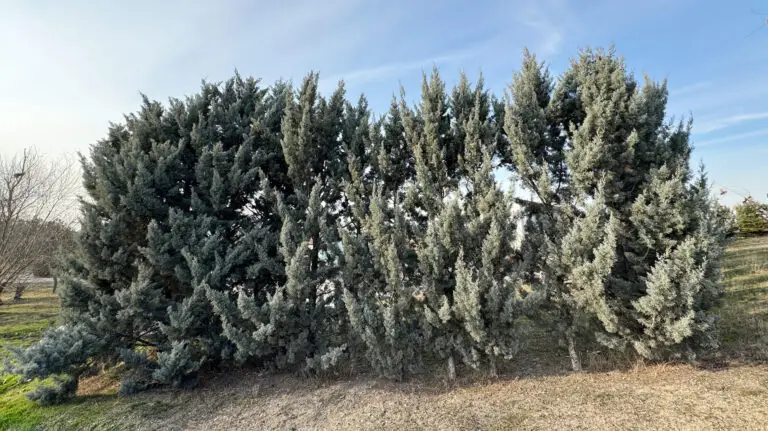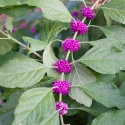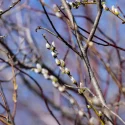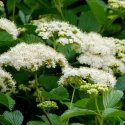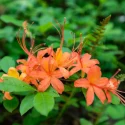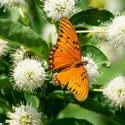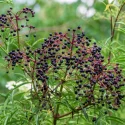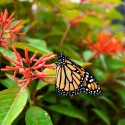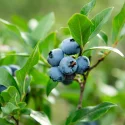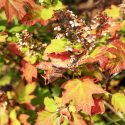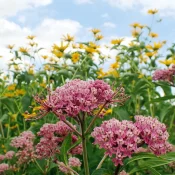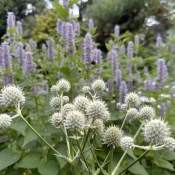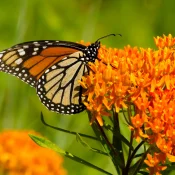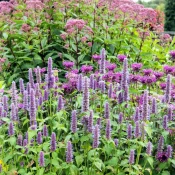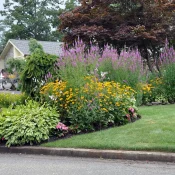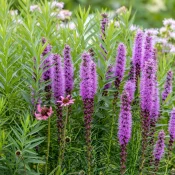What are fast-growing native plants to block unwanted views?
Do you have an ugly parking lot next door, a loud bar, or just nosy neighbors? Check out these native plants that can quickly grow up into a privacy screen—while providing benefits for native wildlife.
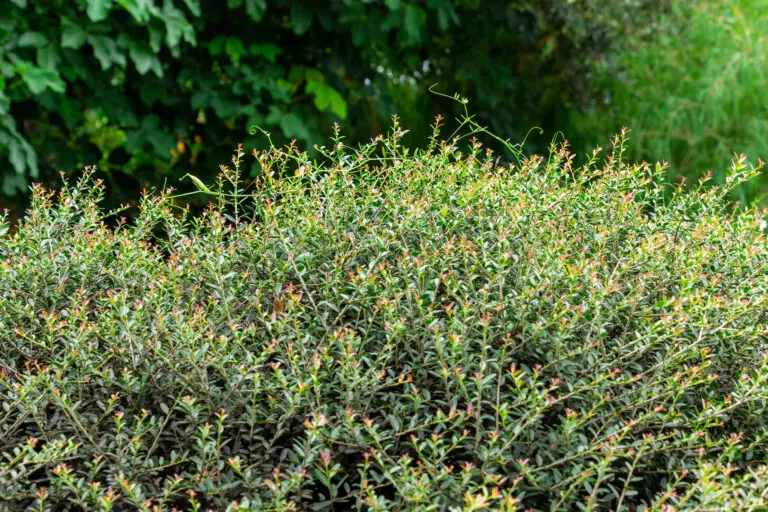
If where you live is perfect except for that one thing—the cracked parking lot next door, the row of dumpsters, a road with lots of traffic noise, or just super-nosy neighbors—you might be thinking about a fence or trees to block the view.
While you’re at it, why not plant something native that can also anchor the soil and boost native wildlife and pollinators?
Wherever you live, there are great options. Let’s meet a few of them below.
Here are the criteria for making the list:
- The plant has to provide privacy all year round, so it shouldn’t lose its leaves in the winter.
- It has to be fast-growing, so you don’t have to look at the ugly parking lot any longer than necessary.
- It has to be adaptable to many conditions and fuss-free.
- And of course, it has to provide benefits to native wildlife.
Here are 6+ native options that made the cut!
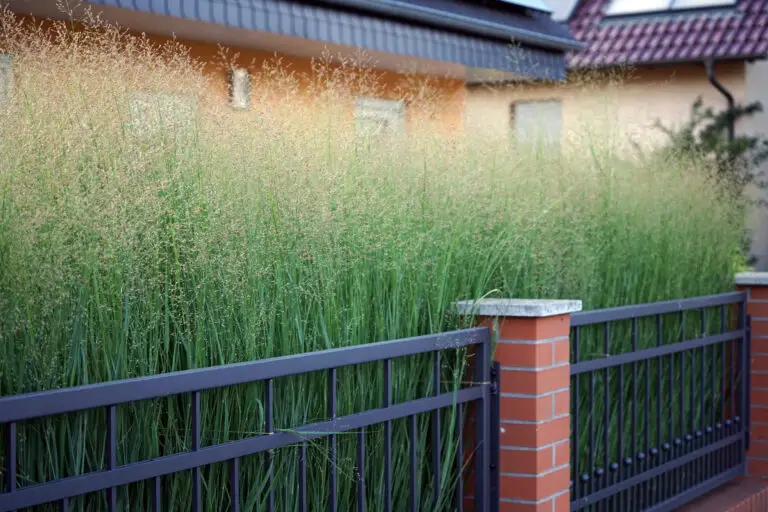
The heavy hitter: Switchgrass
Latin name: Panicum virgatum
If you live anywhere in the U.S., the answer to your problem may very well be Switchgrass.
Switchgrass is native to every U.S. state except the West Coast. If a plant is that widespread, it usually means it’s very adaptable and also very valuable to wildlife—both are true for switchgrass. It’s a handsome tufted grass that quickly fills in about 4 to 7 feet tall. Crucially, it remains upright all winter to block your unsightly view.
Switchgrass can flourish just about anywhere on any type of soil, including clay; the only thing it can’t handle is very deep shade, where it will flop.
Songbirds love the seeds, and the leaves are a host for several types of butterflies and moths. It’s even deer-resistant!
Switchgrass cultivars
There are many cultivars of this species (variations that have been selected for unusual characteristics). That means you can get it in different colors and heights. Some include:
- ‘Blue Tower,’ which is blue-green and grows up to 8 feet tall when it’s in flower
- ‘Cloud Nine,’ which can grow to 7-8 feet and has gold fall color
- ‘Dallas Blue,’ which is drought-tolerant with wide blue leaves, and grows to 5 feet.
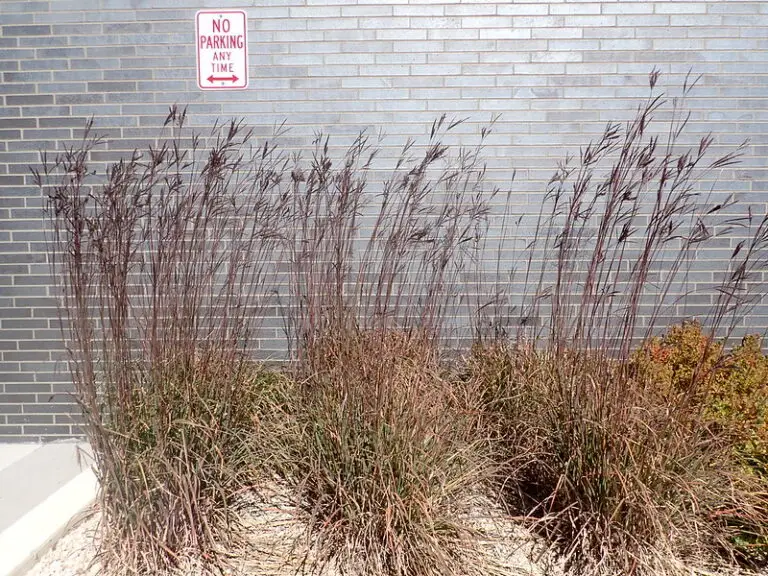
Big Bluestem: Another great (tall) option
Latin name: Andropogon gerardii
Another similar and excellent option is Big Bluestem. This iconic native grass is found in every state east of the Rockies. It’s a bit slower to establish itself than Switchgrass, but it’s every bit a hard-hitter in terms of native wildlife value. It’s a host plant for multiple native butterflies.
Big Bluestem grows from 4 to 8 feet tall, with blue-green stalks and pretty russet seed stalks in fall and winter. It can grow in many types of soil, has a long root that makes it drought-resistant, and it’s also tolerant of salt. Again, the only thing big bluestem can’t handle is very deep shade, where it will flop.
Big Bluestem cultivars
Cultivars (variations) include:
- ‘Red October,’ which grows 6 feet tall and has burgundy fall foliage
- ‘Dancing Purple,’ which grows 6 feet tall and turns plum-colored in late summer.
If you live on the Pacific Coast, grow:
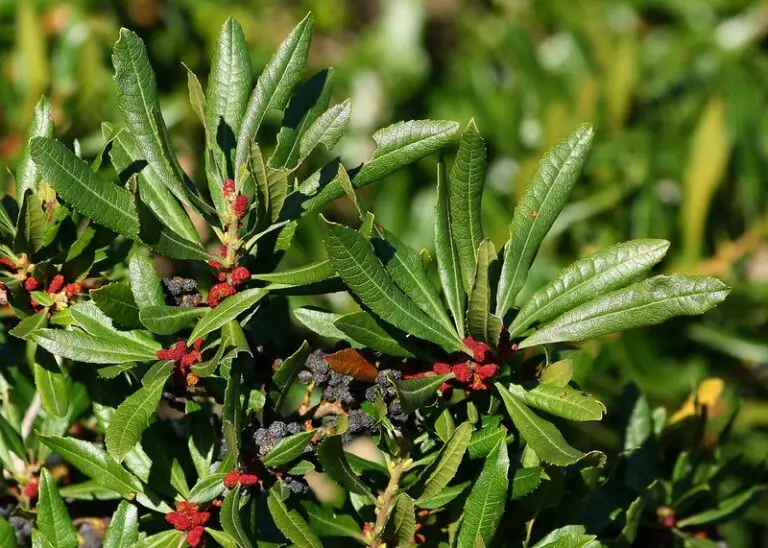
Pacific Wax Myrtle
Latin name: Myrica californica or Morella californica
Pacific Wax Myrtle is a handsome, upright shrub that makes a perfect privacy screen as it’s dense and evergreen. It grows 10 to 30 feet high and wide and can be trimmed into a hedge if you like.
It has little purple-black fruits in the fall which attract birds.
Happily, it’s tolerant of many soils, including sand and clay, and it doesn’t mind salt spray.
Same plant, lots of names
This plant has many names—you might see it listed as California bayberry, California myrtle, California wax myrtle, or Pacific bayberry.
If you live in the Southeast, grow:
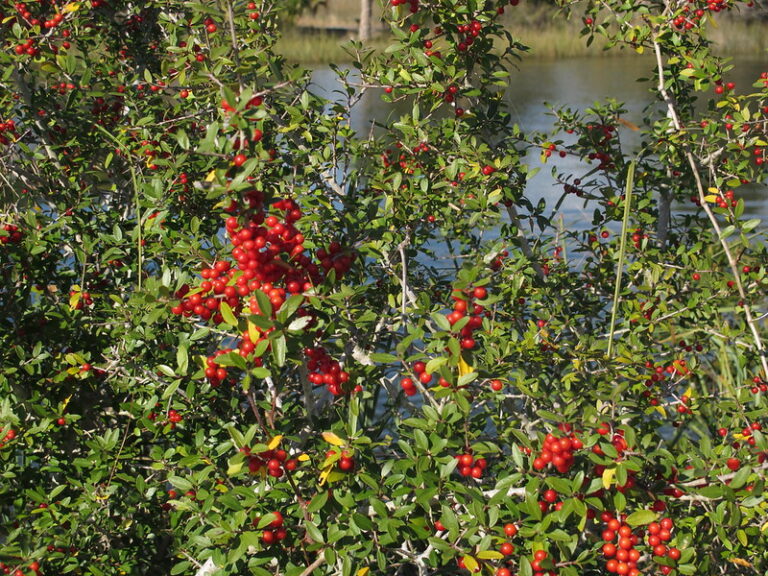
Yaupon Holly
Latin name: Ilex vomitoria
Yaupon Holly is an evergreen, broadleaf shrub with small, bright green leaves and tiny red berries that is native to all of the southeastern U.S. into eastern Texas. It grows rapidly to 10 to 20 feet tall and 8 to 10 feet wide and can be sheared into a screen or hedge that will stay green and private all year long.
Yaupon is one tough plant. It can grow in anything from full sun to deep shade, which is unusual in plants, and in a huge range of soil types. It can handle drought, and even salt, and it’s not a favorite for deer.
It’s also a 10 out of 10 when it comes to benefits for wildlife. Yaupon is a host plant for multiple native butterflies, and native bees and other pollinators visit the blooms.
If you want tiny bright red berries that attract birds, make sure you plant both a male and a female plant (the nursery you buy it from should be able to provide this information).
Yaupon cultivars
There are many cultivars (variations) of this species, which means you can find types that are smaller, larger, or have special traits like yellow fruits. For example, you might want to look for ‘Will Fleming’ or ‘Will’s Upright,’ which is a variation that grows into a column, or a weeping form.
Looking for more options?
If you can afford to wait just a little bit for your privacy screen to fill in, here are three more species that make excellent screens but grow only moderately fast.
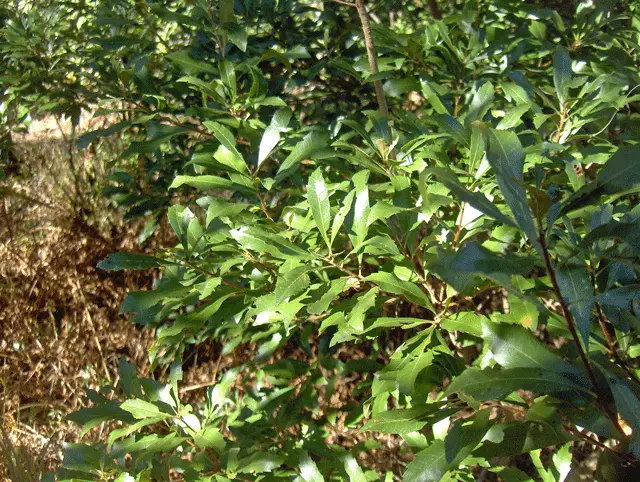
Swamp Bayberry (a.k.a. Evergreen Bayberry)
Latin name: Myrica caroliniensis, Morella caroliniensis, or Myrica heterophylla (all three have been used for the same plant)
This evergreen shrub is native to the eastern coastal states from Texas all the way north to Pennsylvania. Swamp Bayberry has wide, bright green, aromatic leaves that make it distasteful to deer. It grows at a moderate pace and will reach 6 to 8 feet tall and wide.
Swamp Bayberry is another very versatile plant. It’s tolerant of both wet and dry conditions, grows in anything from full sun to partial shade, and can even handle salt.
Bayberry is also an excellent choice for wildlife. It’s a host plant for the Red-banded Hairstreak butterfly and its fruits are loved by songbirds, especially yellow-rumped warblers.
Arizona Cypress
Latin name: Hesperocyparis arizonica or Cupressus arizonica
A beautiful gray-green evergreen tree with a pyramidal shape, Arizona Cypress is native to the Southwest, but it’s hardy down to 0° Fahrenheit. It’s a fast-growing tree that is often used for windbreaks and privacy screens because the branches tend to grow very densely.
Because of its popularity, there are several cultivars (variations selected for unusual traits), such as ‘Carolina Sapphire,’ ‘Blue Ice,’ and ‘Blue Steel,’ which have blue-green foliage.
Depending on what kind you buy, Arizona Cypress grows 20-40 feet tall and 15-25 feet wide. They are all very drought-tolerant, and all need to grow in full sun.
Eastern Redcedar
Latin name: Juniperus virginiana
Eastern Redcedar is a blue-green conifer tree that is extremely wide-ranging—it’s native to every U.S. state east of the Rockies. It can grow in many kinds of soils, including both dry, poor soils and swamps, and is extremely salt-tolerant. It does need sun.
Growing at a moderate pace to 30 feet tall and 10 to 20 feet wide, this tree is known as sturdy and dependable. Its evergreen foliage will keep that undesirable view hidden year-round.
Female trees produce tiny cones that are a special favorite of cedar waxwing birds. The tree itself is a host plant for native moths and butterflies, too, including the striking Juniper Hairstreak butterfly and the regal Imperial moth. The only wildlife that don’t like it are deer.
Note that Eastern Redcedar is a host for a tree disease known as cedar-apple rust. It doesn’t normally harm the redcedars, but if you have apple orchards nearby, they may not appreciate this tree.
Where can I find these native plant recommendations?
Here are some recommendations for sourcing native plants:
Where can I find seeds and plants?
Finding native plants can be challenging (we partly blame Marie Antoinette.) To make it easier, we’ve assembled four sourcing ideas.
300+ native nurseries make finding one a breeze
Explore 100+ native-friendly eCommerce sites
Every state and province has a native plant society; find yours
Online Communities
Local Facebook groups are a great plant source
And that wraps up our list of native plants that help to block a view (or create privacy.) We can skip fences or non-native evergreen options and instead opt to plant something that supports wildlife, while requiring less fussy care than a lawn. Planting these native gems ensures you get the view you want and help the ecosystem in your very own yard. Looking for more native plant landscaping inspo? Visit our Best Native Trees for Front Yards or our Best Native Plants for Birds. Happy planting!
Sources
- “Panicum virgatum.” Lady Bird Johnson Wildflower Center. Accessed Feb. 28, 2025.
- Mahr, Susan. “Switch Grass, Panicum virgatum.” University of Wisconsin – Madison Extension. Accessed Feb. 28, 2025.
- “Ilex vomitoria.” N.C. Cooperative Extension. Accessed Feb. 28, 2025.
- “Myrica californica.” N.C. Cooperative Extension. Accessed Feb. 28, 2025.
- “Myrica caroliniensis.” N.C. Cooperative Extension. Accessed Feb. 28, 2025.
- “Juniperus virginiana.” N.C. Cooperative Extension. Accessed Feb. 28, 2025.
- “Cupressus arizonica.” University of Arizona Campus Arboretum. Accessed Feb. 28, 2025.
